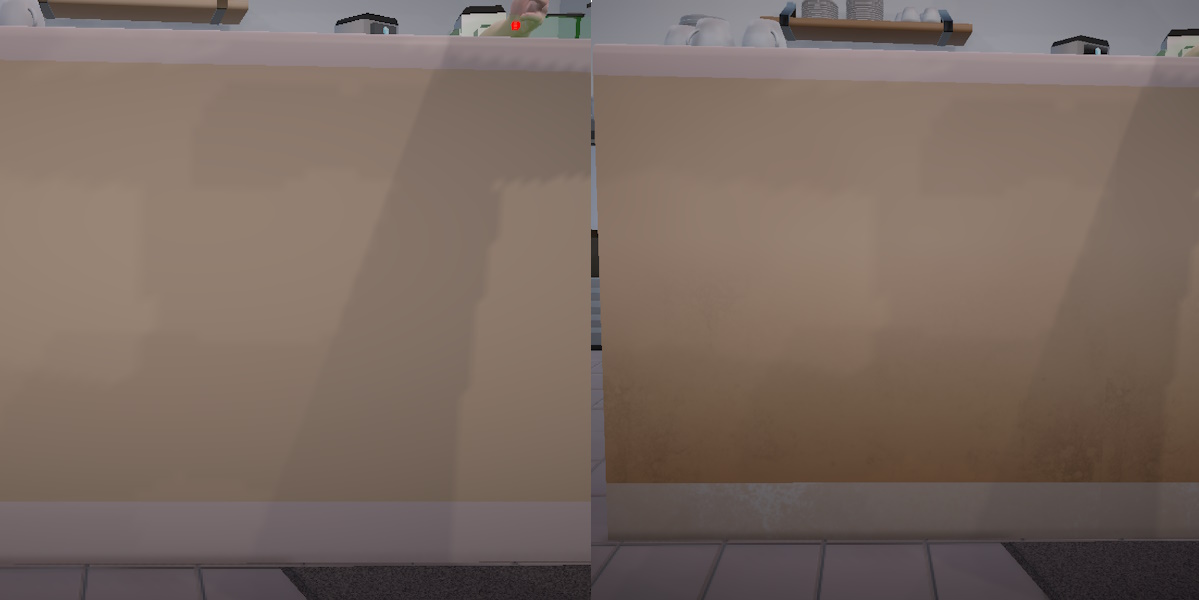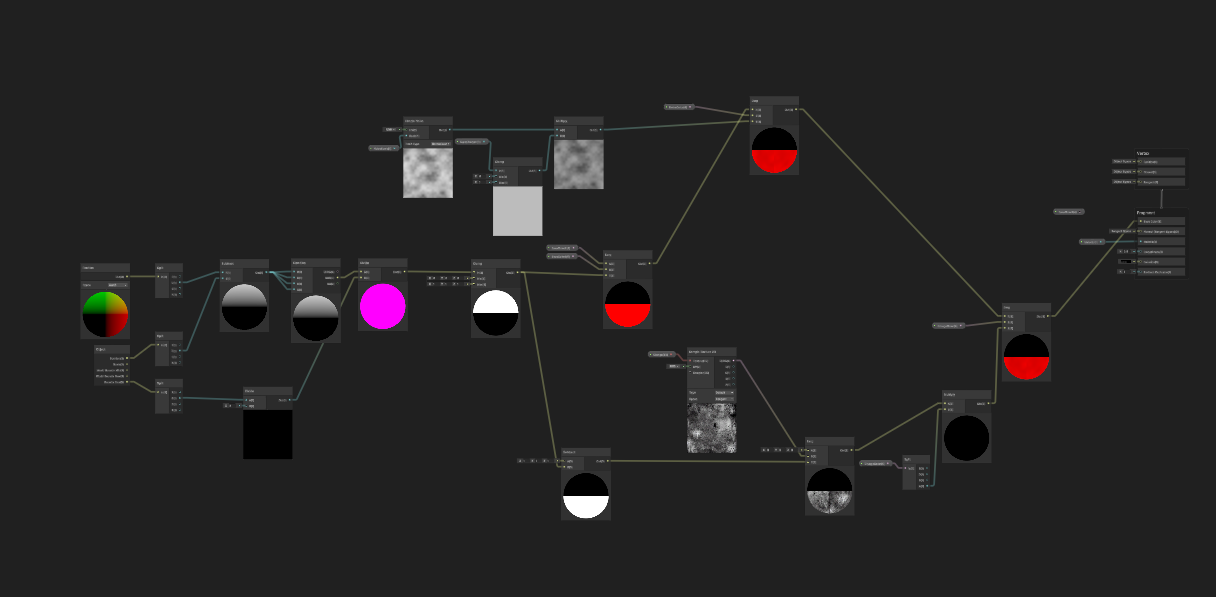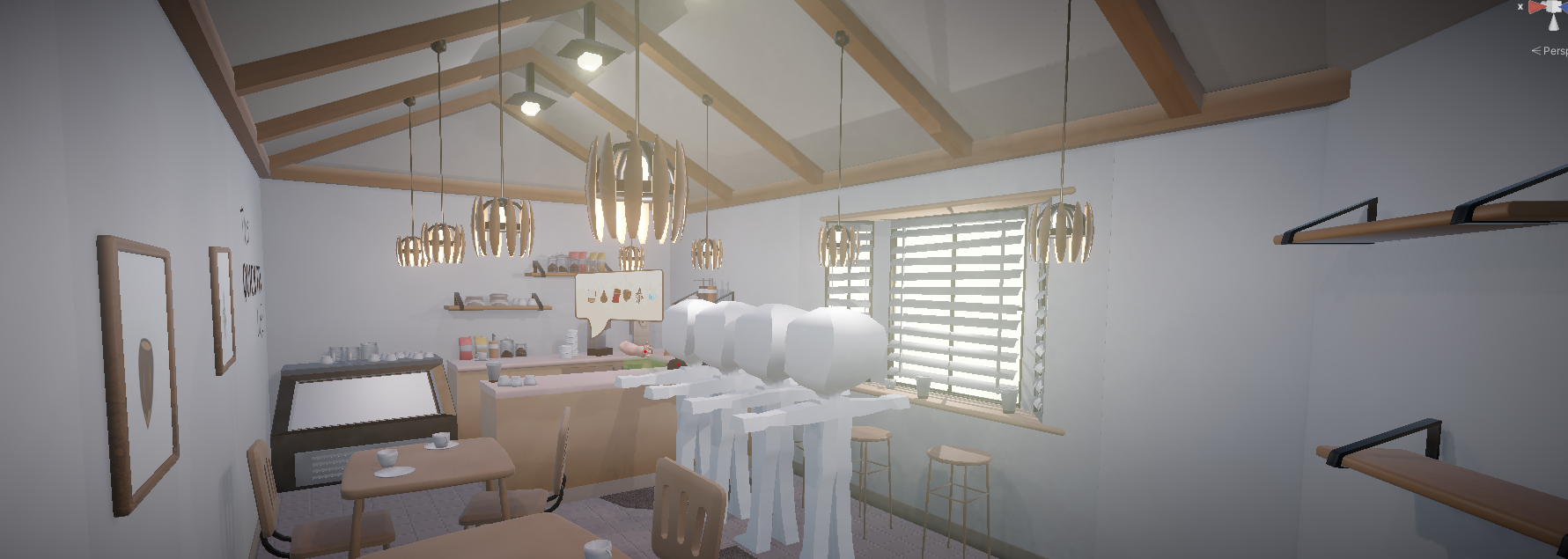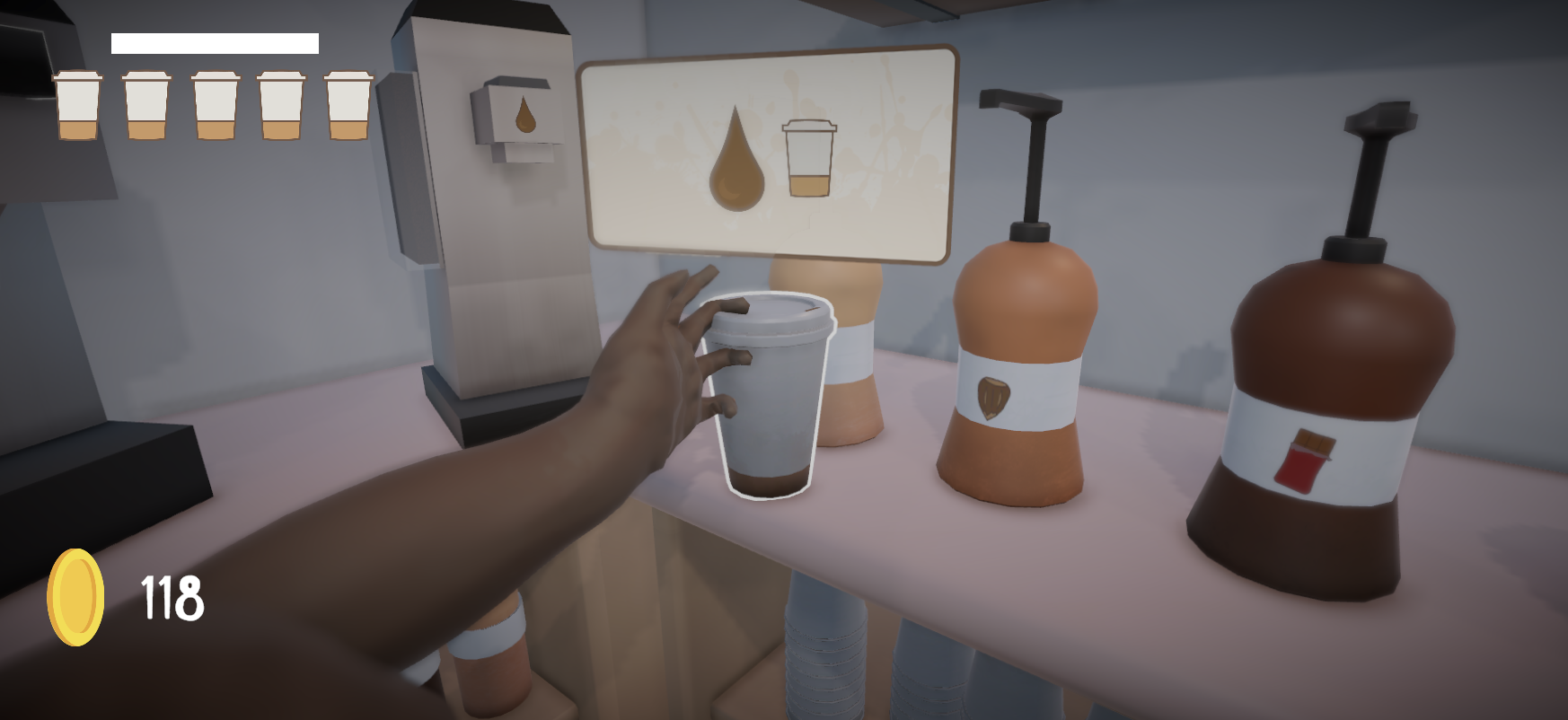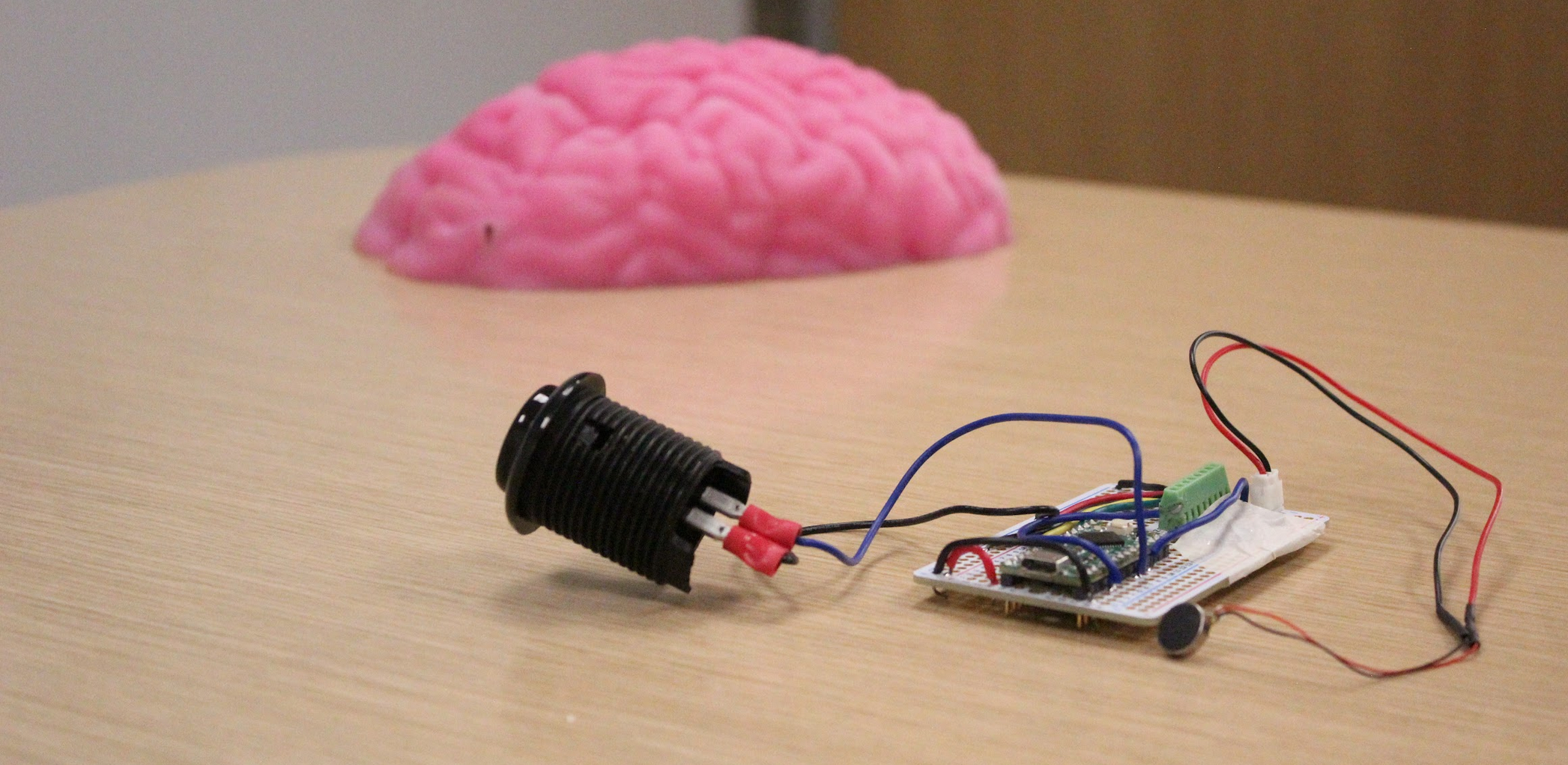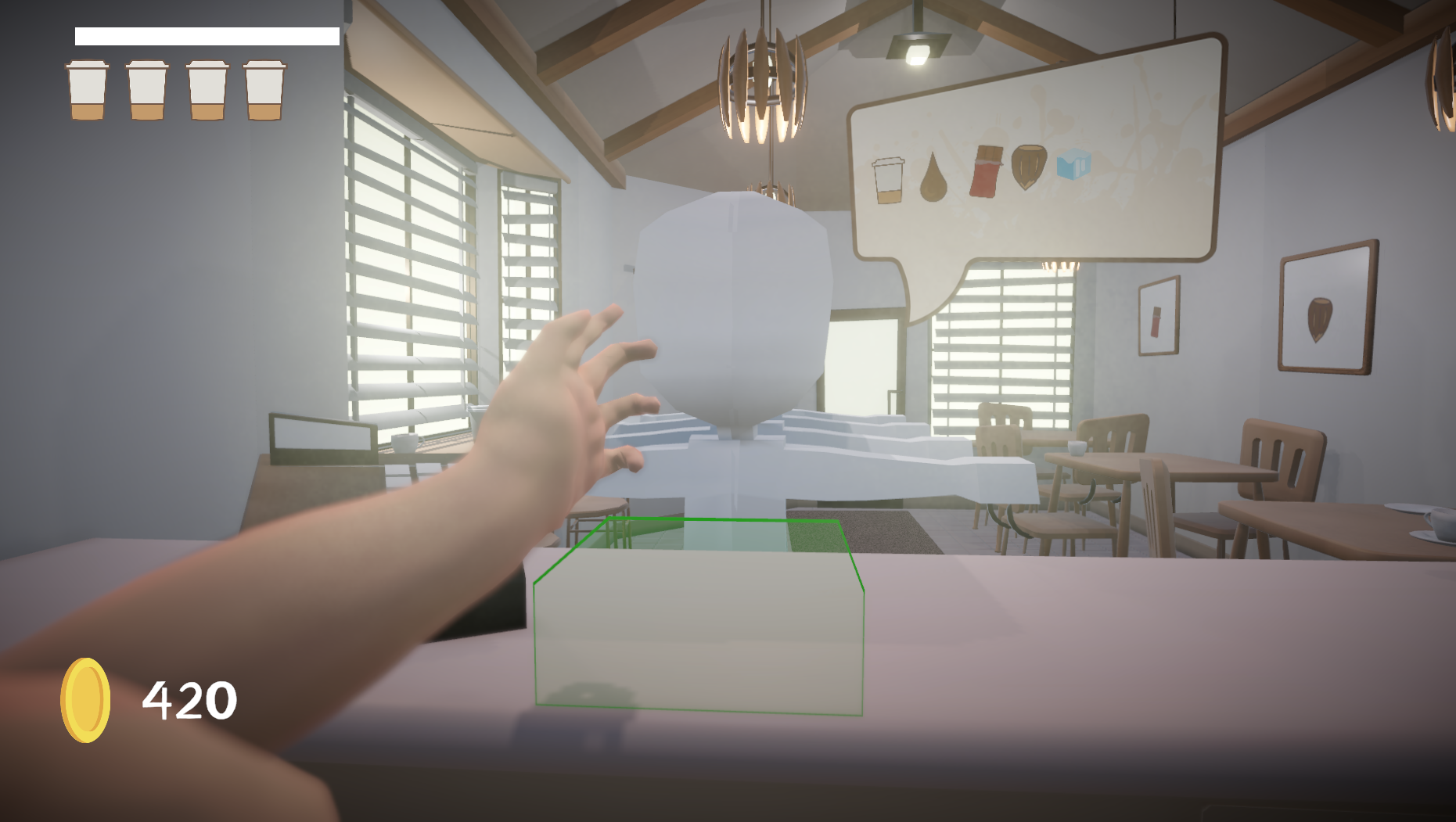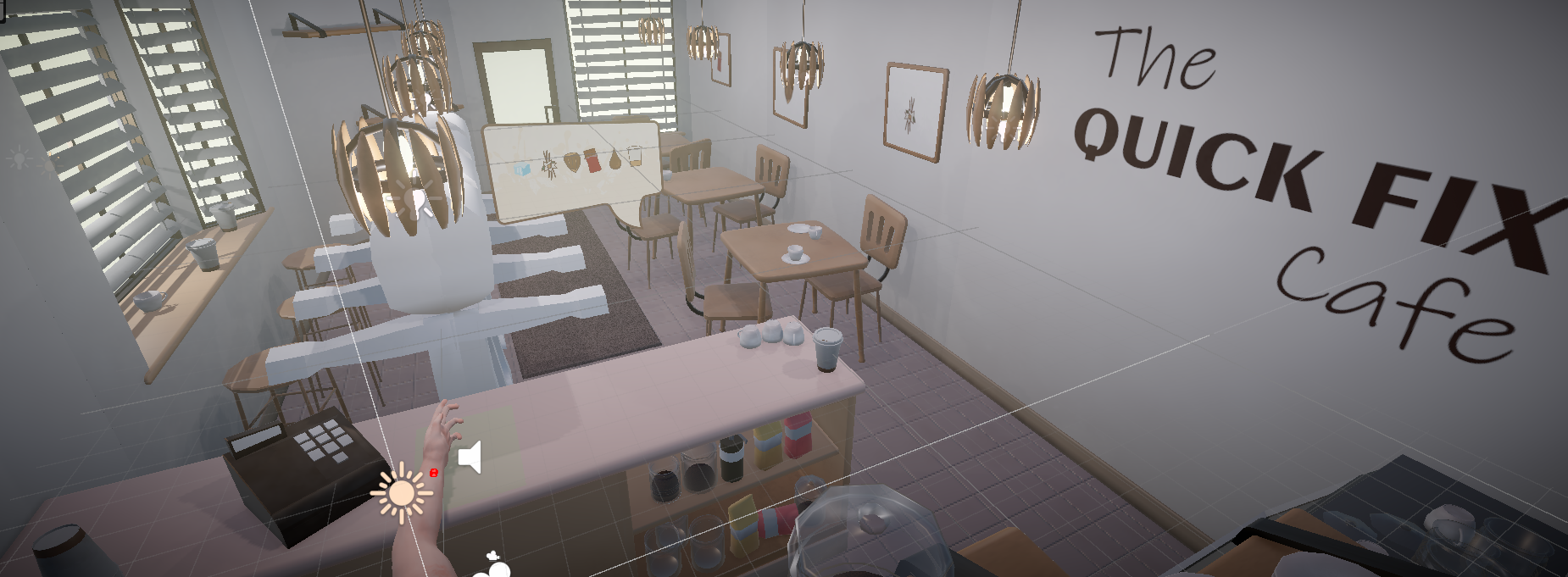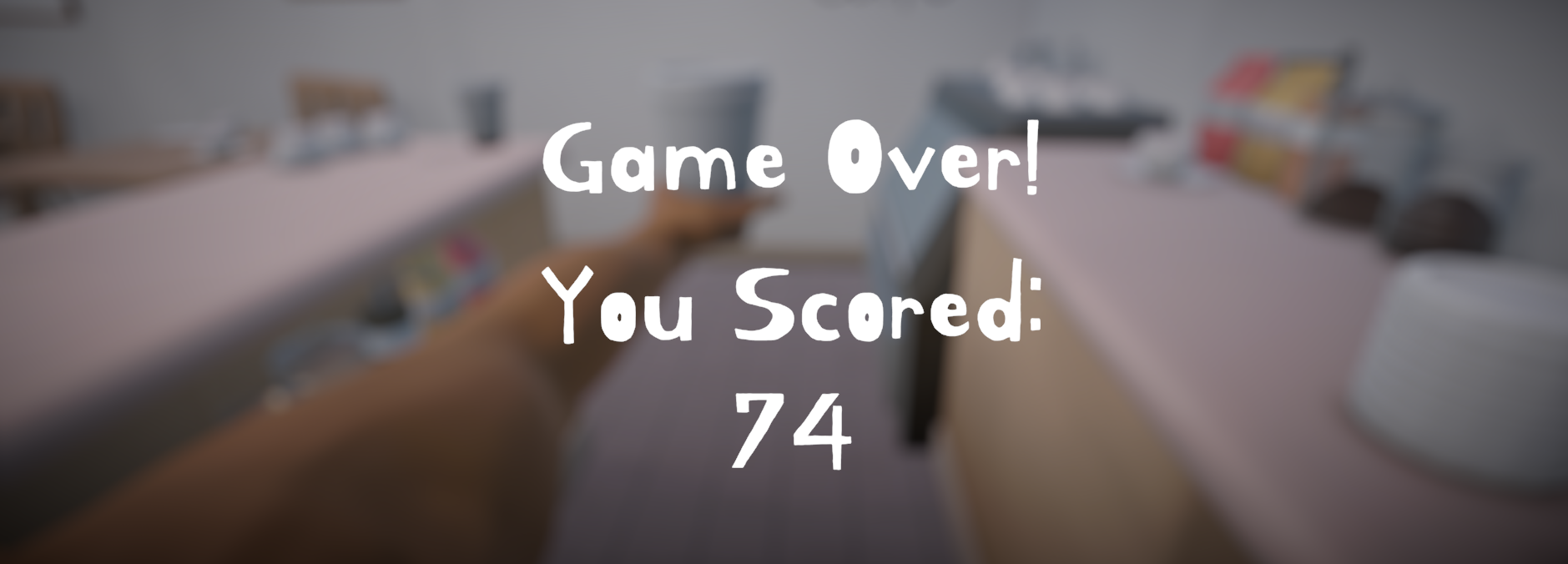Brewmanity
Alt-Control Game
Brewmanity is a game developed as a school project by a team of four, where we were challenged to create an alt-controlled game, and an accompanying controller. After weeks of ideation and months of iteration, we're proud to present Brewmanity. A wacky game, where you fulfill coffee orders for aliens by squeezing and swinging a motion controlled brain.
Take a look here!Early Prototyping & Playtesting
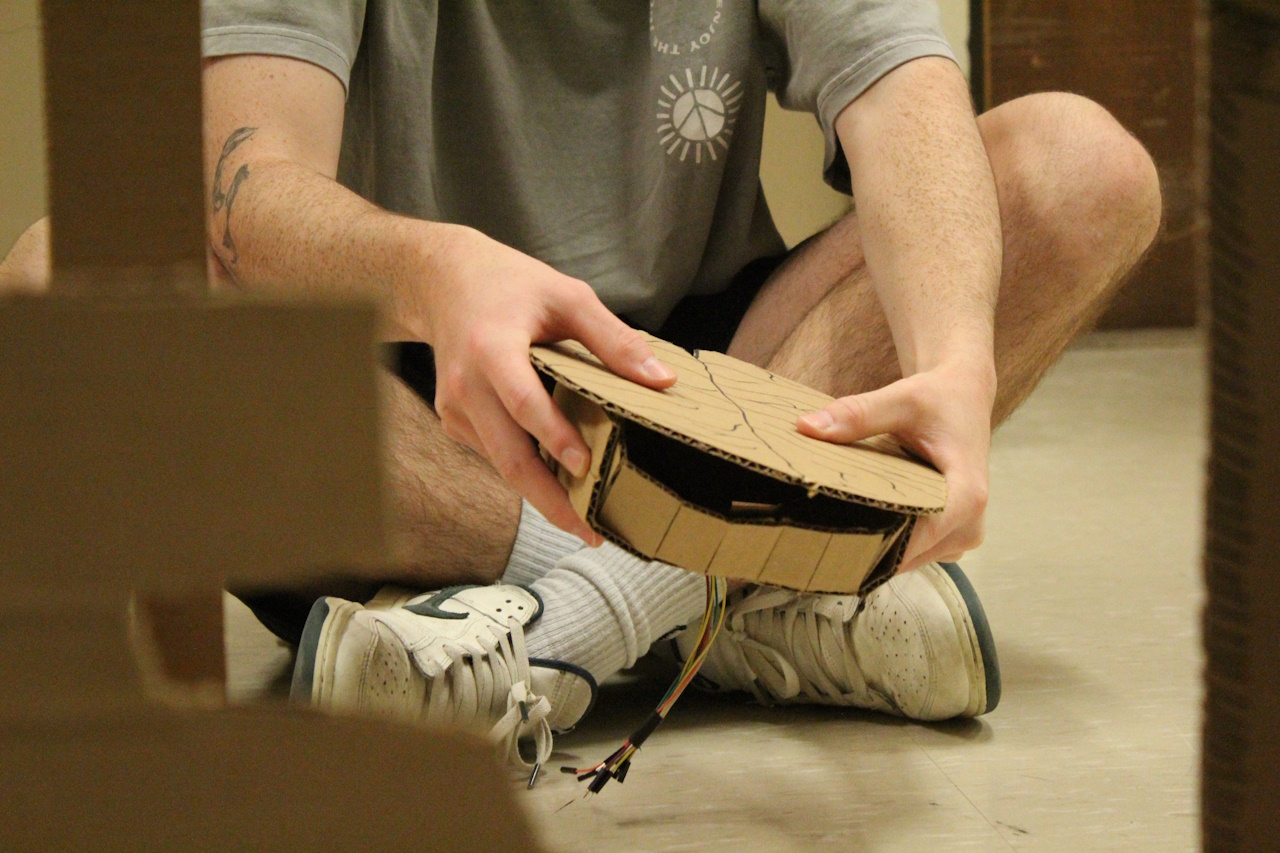
Before even starting to develop our game, we first spent a lot of time trying to narrow in on an idea. We were drawn to the idea of trying to control a floppy arm, via motion controls. We explored this concept with a cardboard prototype, trying to feel out if the game would make sense, and trying to figure out what obstacles we might run into.
With a couple hours and some hot glue, we had something in our hands that resembled what we wanted to make. Immediately we began to ask questions. How will you take orders? How will you deliver them? What will the game loop look like, endless or timed?
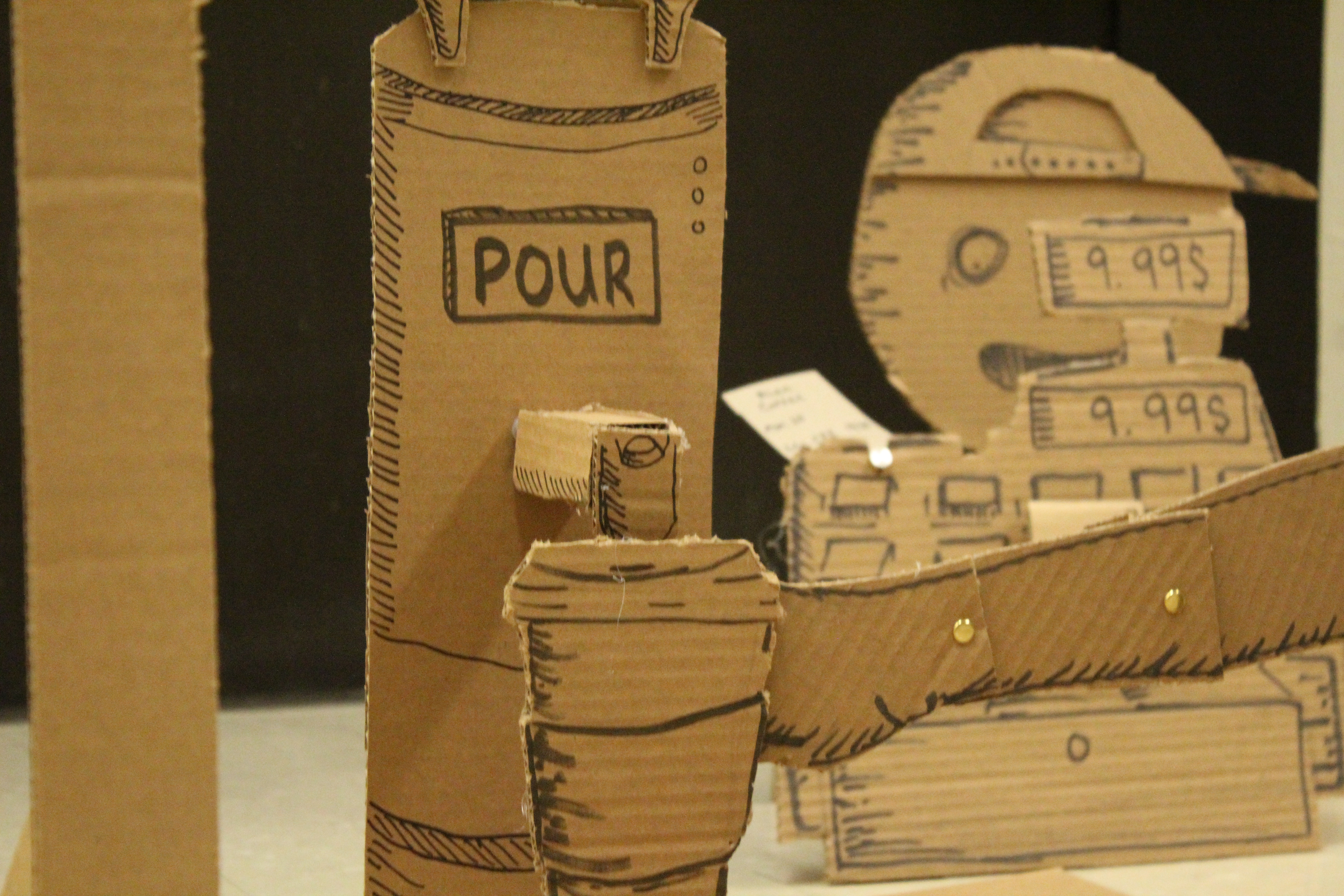
First Iterations & My Contributions
My job was to take care of the in-engine work. This included implementing the player movement, interaction, and physics systems. When I first started ideating for the arm movement system, I used spring physics to create an arm that sprung to where you wanted it to go. Despite being able to adjust the stiffness of the arms' spring, it stil was hard to control meaningfuly.
For the first prototype of our gameplay systems, I was able to create a similarly 'floppy' arm movement, though I pivoted to a different system. Rather than control the arm directly, you controlled where the arm wanted to go, and the arm moved towards that point with a standard acceleration and dampening. This was much easier to control, but it needed lots of fine-tuning, as the arm had a habit of over-extending. You can see abliity to grab objects, and some of the first object-object interactions were starting to be developed as well.
The second prototype came with a complete overhaul of the arm model & rig. I also started creating some of the UI, using billboards above the cups when they're highlighted to show what's inside them. This could be matched up to icons in the customers order. I also whiteboxed a basic environment and created a system for adding 'ingredients' into the coffees.
Final Product & Visuals
As the mechanics and systems were starting to be finalized, it was time to start paying more attention to some of the visuals of the game. I assisted with creating some of the models for the environment. A big priority here was making things look intentionally stylized as opposed to involuntarily stylized. 😛
One technique I used here was to break up parallel lines, by making things askew and enlarging proportions, you can convey a style reminiscent of animated cartoons. Take a look at the comparison below. I used this technique on shelves, chairs, doors, and windows, in order to give the environment a cartoon-esque asethetic.

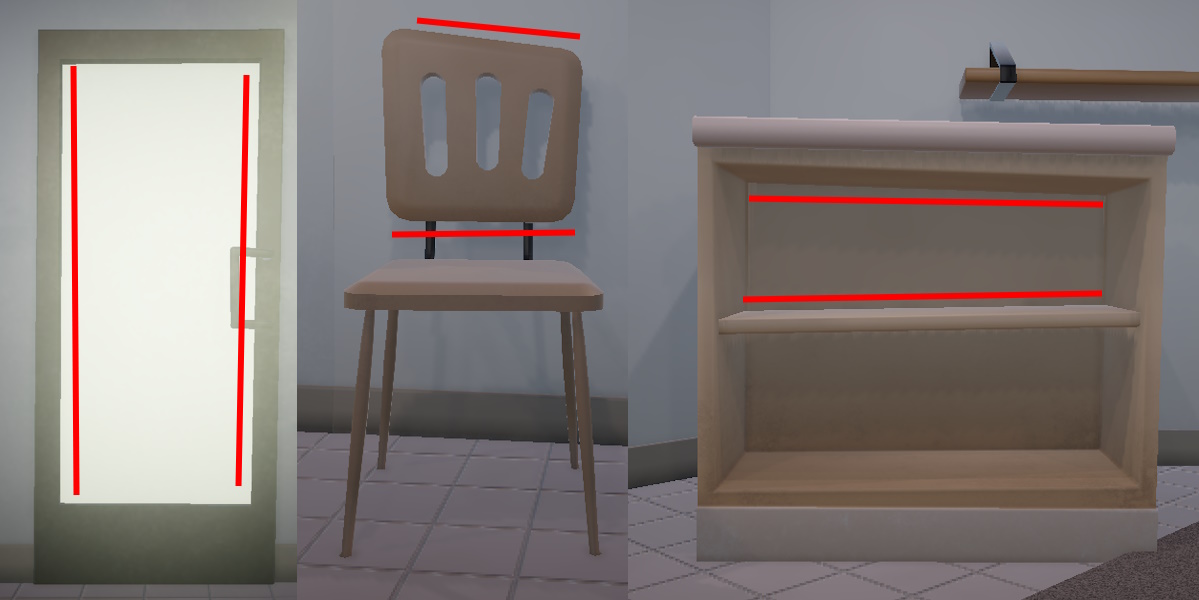
Another thing to be weary of is keeping the environment looking visually interesting while texturing with flat colors. I created a procedural material using Unity's shader graph, that lets me quickly texture an object with a vertical gradient, a grunge overlay that increases opacity towards the bottom of the object, and a noise overly. This is most easily seen on the counter model, though it works well on everything from the huge walls, to the small clutter objects.
